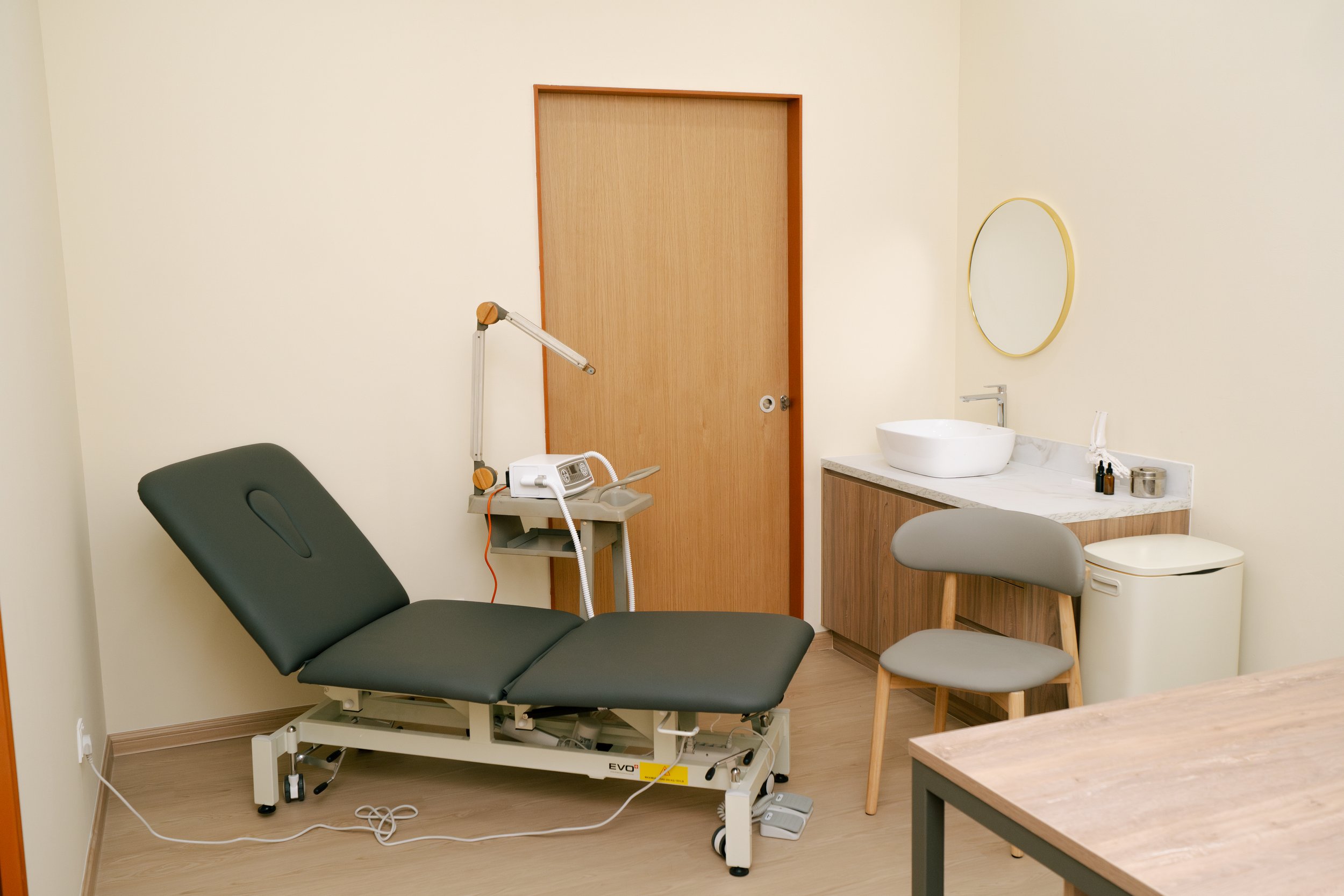
Morton Neuroma
What Is Morton’s Neuroma?
Morton’s neuroma is a painful condition involving the plantar digital nerve, typically found between the third and fourth toes. It develops when this nerve becomes compressed and irritated—most often due to footwear or faulty biomechanics—resulting in a thickened, swollen nerve sheath. The condition produces a sharp, burning pain in the ball of the foot and can radiate into the toes.
Morton’s neuroma is a nerve condition, not a tumour
Tight shoes and high heels are the leading causes
Often described as “walking on a marble or pebble”
Causes & Risk Factors
Morton’s neuroma is often the result of chronic pressure, friction, or trauma on the nerve between the metatarsal bones in the foot. Common causes and contributing factors include:
Footwear
High heels that increase forefoot pressure
Tight or narrow shoes that squeeze the toes
Poorly cushioned or unsupportive shoes
Activity & Foot Function
High-impact sports (running, court sports, jumping)
Biomechanical issues such as overpronation or flat feet
Forefoot overload and improper gait mechanics
Additional Risk Factors
Age (40+) due to thinning fat pads
Occupations involving prolonged standing
Foot conditions like bunions, tailor’s bunions, or bursitis
Symptoms of Morton’s Neuroma
Morton’s neuroma symptoms often begin gradually but may worsen over time if left untreated. You may notice:
Sharp or burning pain in the ball of the foot
Tingling, numbness, or pins and needles in the toes
A clicking or snapping sensation between the toes
A “marble under the foot” feeling
Pain that worsens with tight shoes or barefoot walking
Local tenderness when pressing on the affected area
Diagnosis at KL Foot Specialist Podiatry
Diagnosing Morton’s neuroma involves a detailed clinical assessment and discussion of your symptoms and footwear history. Our experienced podiatrists will:
Palpate the area to assess for pain and swelling
Perform the Mulder’s Click Test (compressing the forefoot to elicit symptoms)
Conduct gait analysis and assess foot biomechanics
Refer for ultrasound imaging to confirm nerve thickening or rule out other causes
Morton’s Neuroma Treatment
Treatment depends on the severity of your condition. Our primary goal is to offload the nerve, reduce pain, and prevent progression.
Conservative Treatments
Footwear Advice: Supportive shoes with wide toe boxes and good cushioning
Custom Foot Orthotics: Designed to offload pressure and separate the metatarsal bones to reduce nerve irritation
DolorClast® Shockwave Therapy: Stimulates healing, improves circulation, and reduces pain in stubborn cases
DolorClast® High Power Laser: Non-invasive pain and inflammation relief for nerve-related foot conditions
Strapping or Padding: Provides temporary relief and offloading
RICE protocol: Rest, Ice, Compression, and Elevation during flare-ups
Medical Interventions (If Needed)
If conservative treatment fails to relieve symptoms, we may refer you for:
Corticosteroid Injections: Temporarily reduce inflammation and pain
Surgical Excision: Removal of the neuroma is a last resort and generally considered only after other treatments have been exhausted
What Happens If I Ignore Morton’s Neuroma?
Without proper treatment, Morton’s neuroma can worsen and become chronic, leading to:
Persistent pain in everyday activities
Nerve damage or long-term numbness
Altered walking patterns, leading to secondary injuries (e.g. hip, knee, or back pain)
Need for surgical intervention
Early diagnosis and treatment = better long-term outcomes.
Preventing Morton’s Neuroma
You can reduce your risk of developing or recurring Morton’s neuroma by:
Choosing wide-fitting, supportive shoes with low heels
Avoiding prolonged use of high heels or tight shoes
Using orthotics if you have flat feet or other biomechanical issues
Stretching and strengthening the muscles of your feet regularly
Gradually increasing the intensity of sports or physical activities
Get Relief at KL Foot Specialist Podiatry
Our podiatrists are trained in diagnosing and treating Morton’s neuroma with precision and care. Whether you’re dealing with sharp forefoot pain or want to prevent the condition from progressing, we’re here to help.
Call now or book online to schedule your comprehensive foot assessment.
Located in Kuala Lumpur – Trusted podiatric care for pain-free movement.
